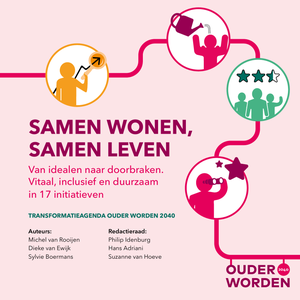We get into an Uber car, and the driver passes by the Kremlin walls, guided by GPS. At the end of the ride, the bill turns out to be three times as expensive than usual. What is the matter? We check the route, and the screen shows that we travelled to an airport outside of Moscow. Impossible. We look again: the moment we approached the Kremlin, our location automatically jumped to Vnukovo. As we learned later, this was caused by a GPS fence set up to confuse and disorient aerial sensors, preventing unwanted drone flyovers.
MULTIFILE

Verkeerslawaai is al decennia een belangrijk bron van omgevingslawaai. Stadslogistiek is daar een belangrijk onderdeel van. Nu meer gekozen wordt voor gemengde wijken is aanpak daarvan nog meer gewenst.
DOCUMENT

Introduction Coastal locations contribute significantly to global drowning, with surfers frequently conducting rescues. This study explored the characteristics of surfers as bystander rescuers in Europe. Methods A cross-sectional online survey collected demographics (age, sex, geographical location), surfing experience, ability, lifesaving and cardiopulmonary resuscitation (CPR) training, information seeking behaviors and previous performance of a rescue. Analyses comprised descriptive frequencies, binomial logistic regression with adjusted odds ratio (AOR) (95% confidence interval [CI]) and chi-squares (p < .05). Results Europe-dwelling respondents totaled 1705 (76% male; 43% 25–34 years). Thirty-nine percent (39.2%; n = 668) had previously performed a rescue. Likelihood of having conducted a rescue significantly increased with 6 or more years of surfing experience (6–10 years [AOR = 1.96; 95%CI: 1.20–3.22]; 11–15 years [AOR = 3.26; 95%CI: 1.56–6.79]; 16 years or more [AOR = 4.27; 95%CI: 2.00–9.11]) when compared to surfers with <1 year experience. Expert/professional ability surfers were 10.89 times (95%CI: 4.72–25.15) more likely to have conducted a rescue than novice/beginners. Respondents who had received both a certified lifeguard and CPR course were significantly more likely to have conducted a rescue (AOR = 3.34; 95%CI: 2.43–4.60). Conclusion Surfers who had previously conducted rescues commonly had more years of experience, higher self-rated surf ability and greater likelihood of having received certified training. However, not all surfers who have performed rescues had received training. Findings suggest surfers should receive rescue and CPR training before they start surfing at locations without trained supervision and refresh training regularly. Surfers are amenable to injury prevention information, especially online and via apps.
MULTIFILE

Samen wonen, samen leven is het resultaat van een unieke samenwerking tussen BeBright, Rabobank, Hogeschool Utrecht en het Kenniscentrum Sociale Innovatie. Met steun van alle partijen en het ministerie VWS is onderzocht welke praktische inzichten naar voren komen na onderzoek van een selectie van succesvolle woonzorggemeenschappen. Wat kunnen geïnteresseerde partijen zich ter harte nemen wanneer zij een vitale, inclusieve en vooral duurzame woonzorggemeenschap willen initiëren? Voor ontwikkelaars, zorginstellingen, woningcorporaties, gemeentes, vrijwilligersorganisaties, burgers, bewoners en andere geïnteresseerden biedt dit boek een schat aan inzicht en wenken voor versnelling en opschalen. Voor iedereen die een zorgzame samenleving dichterbij wil brengen.
DOCUMENT
